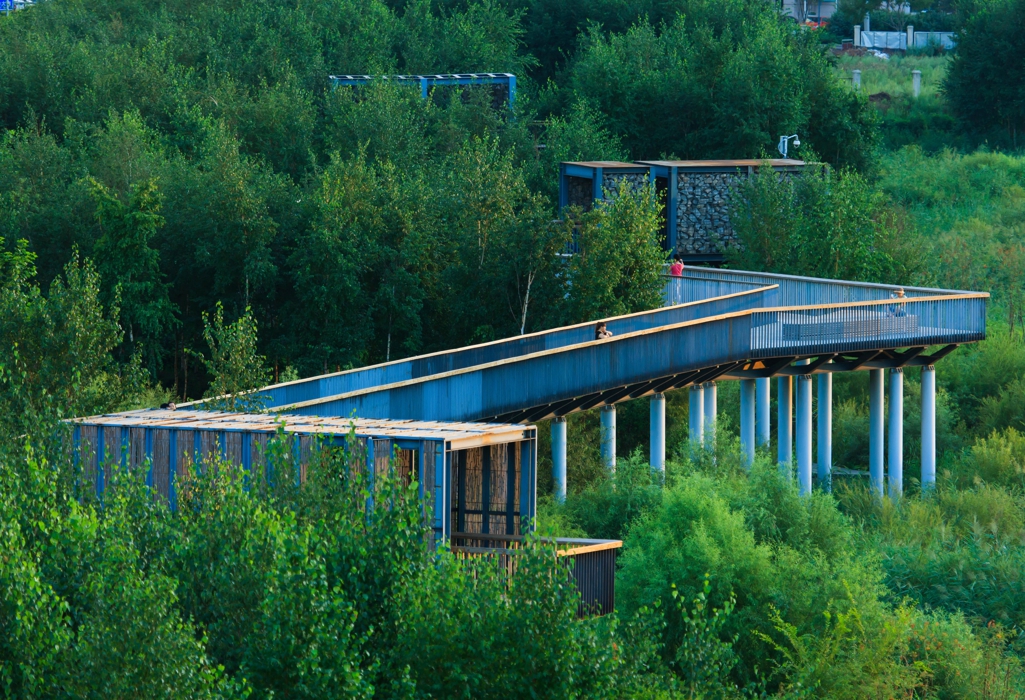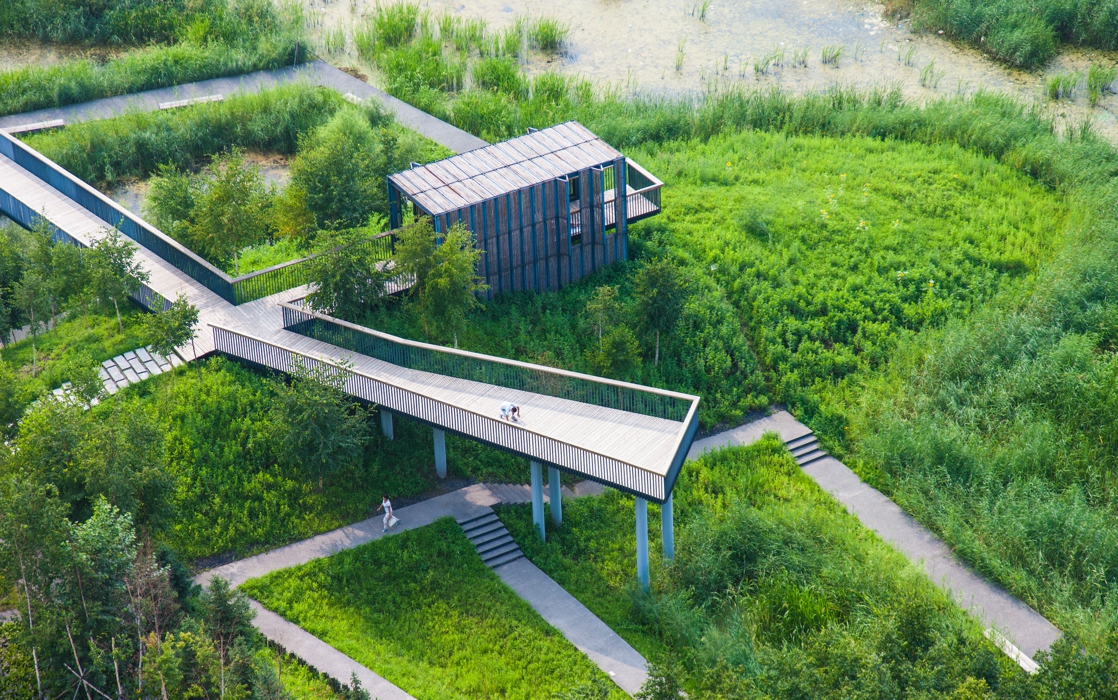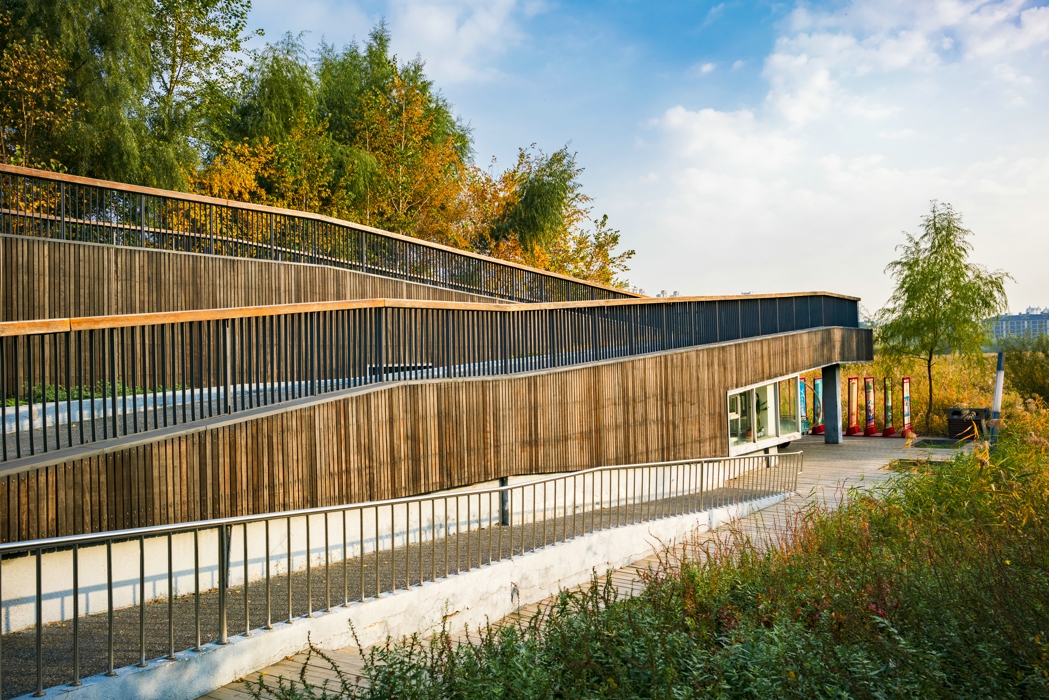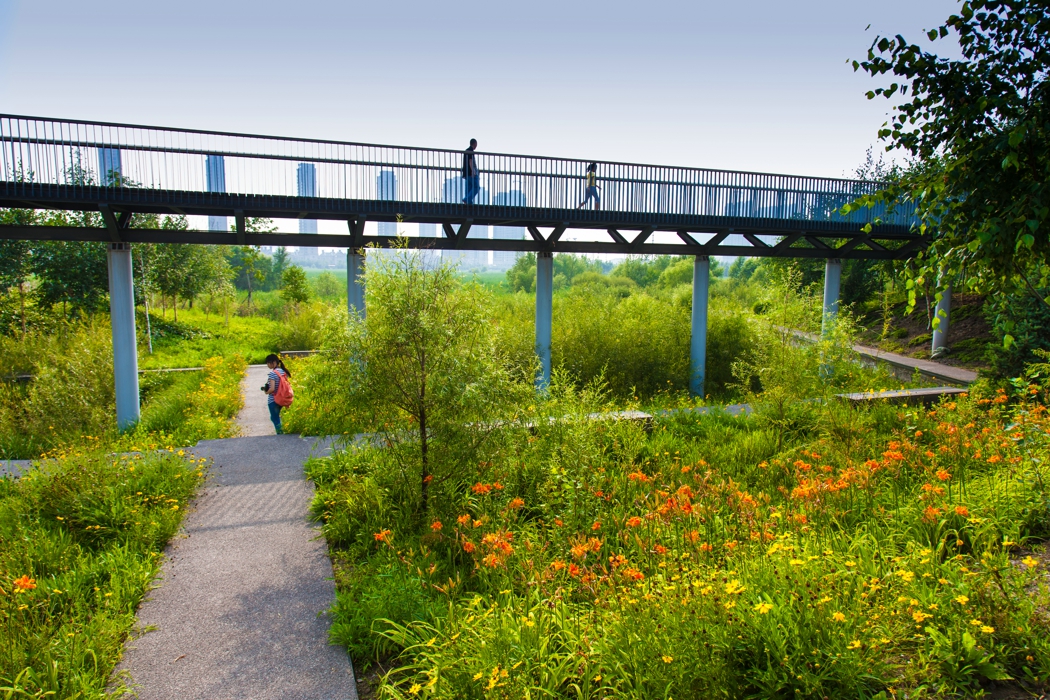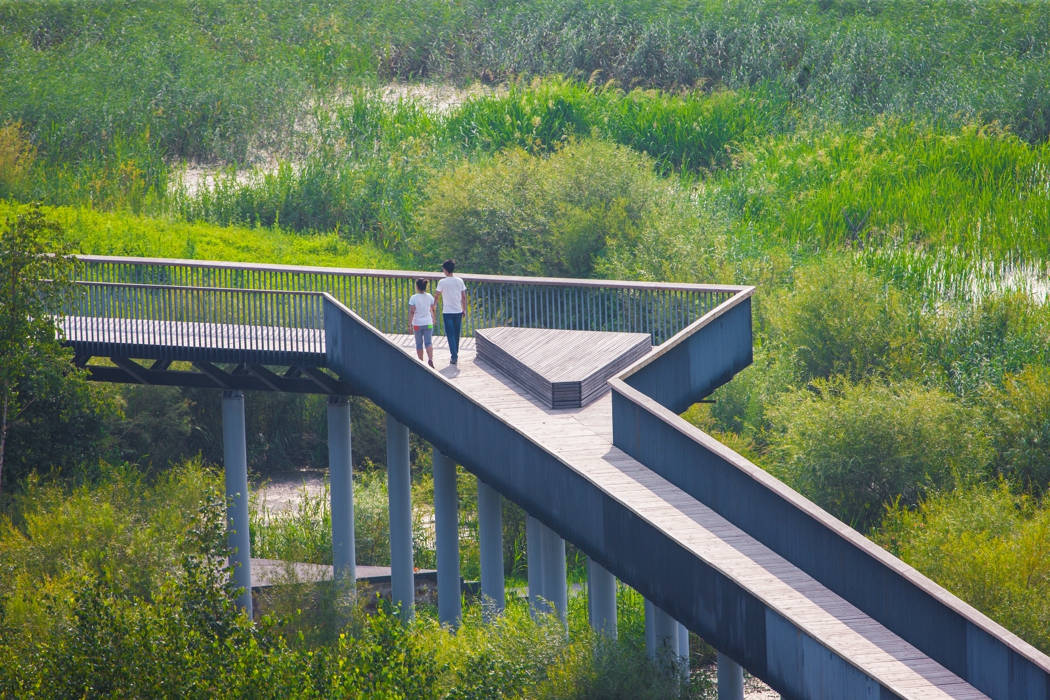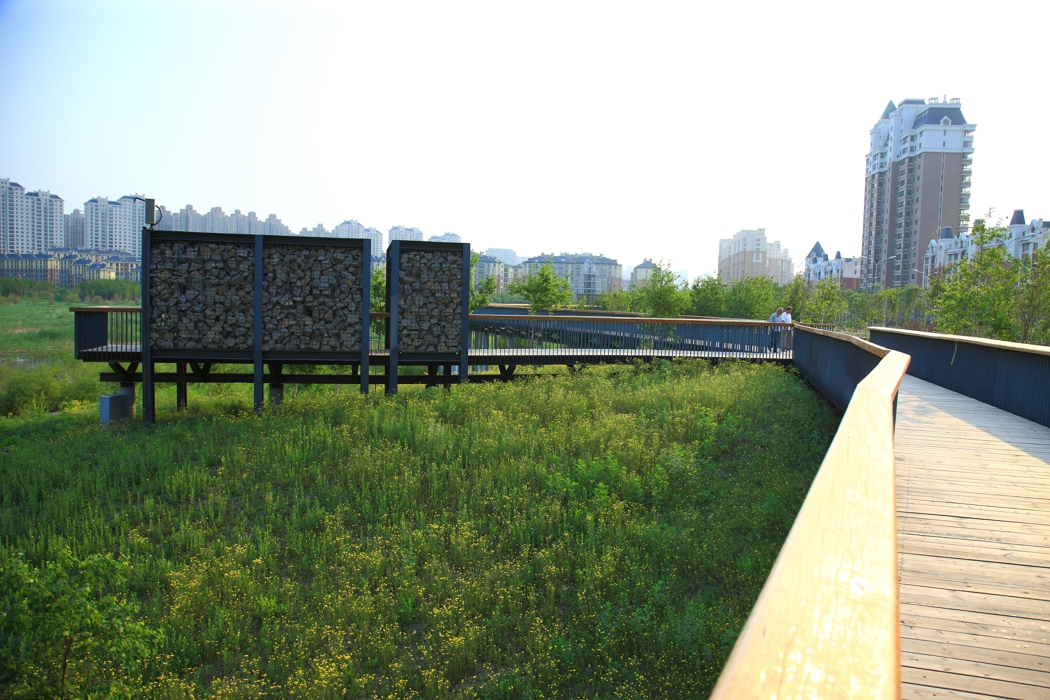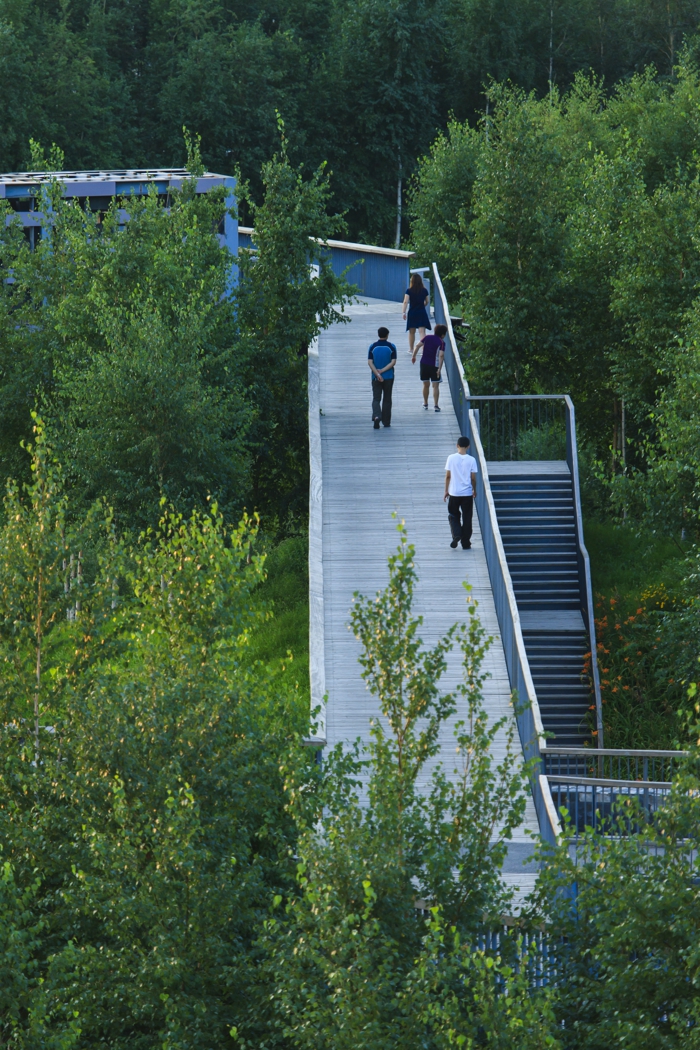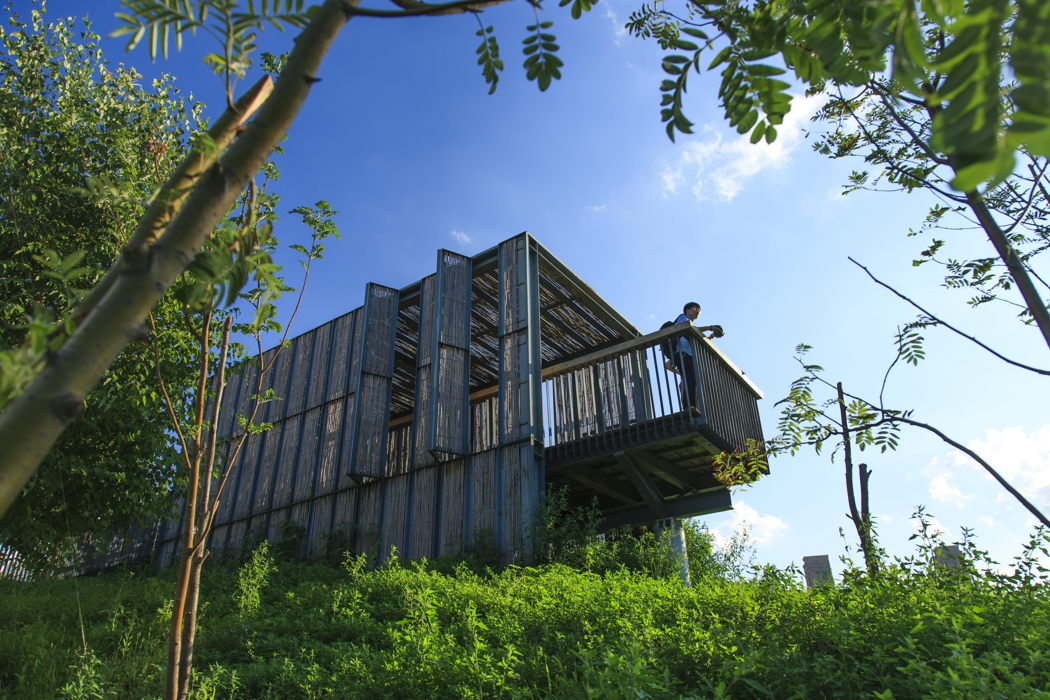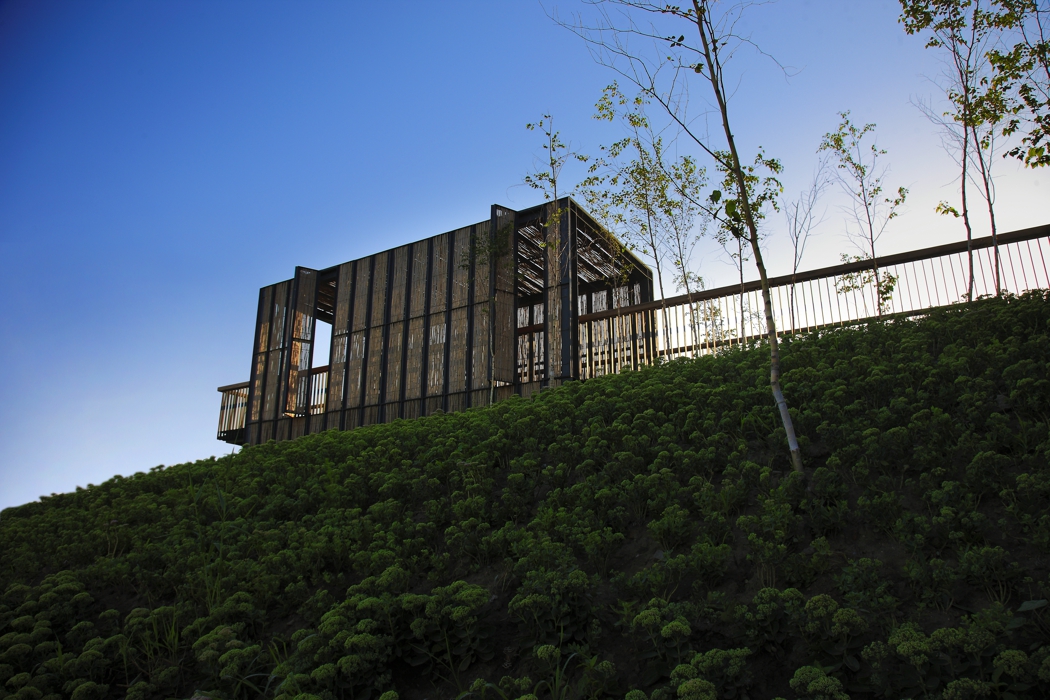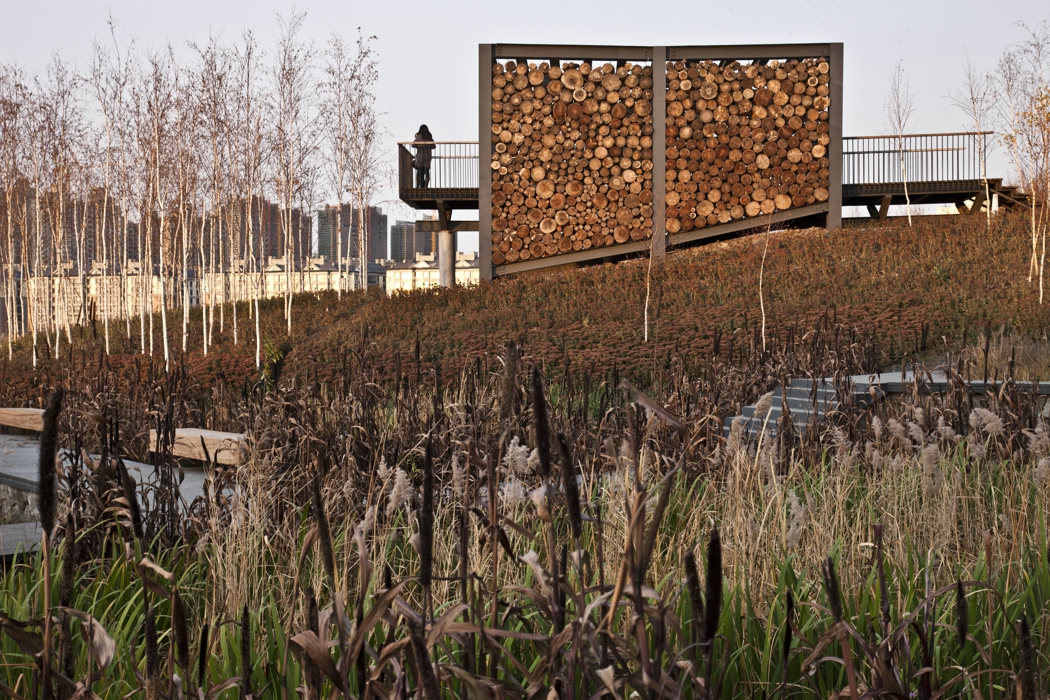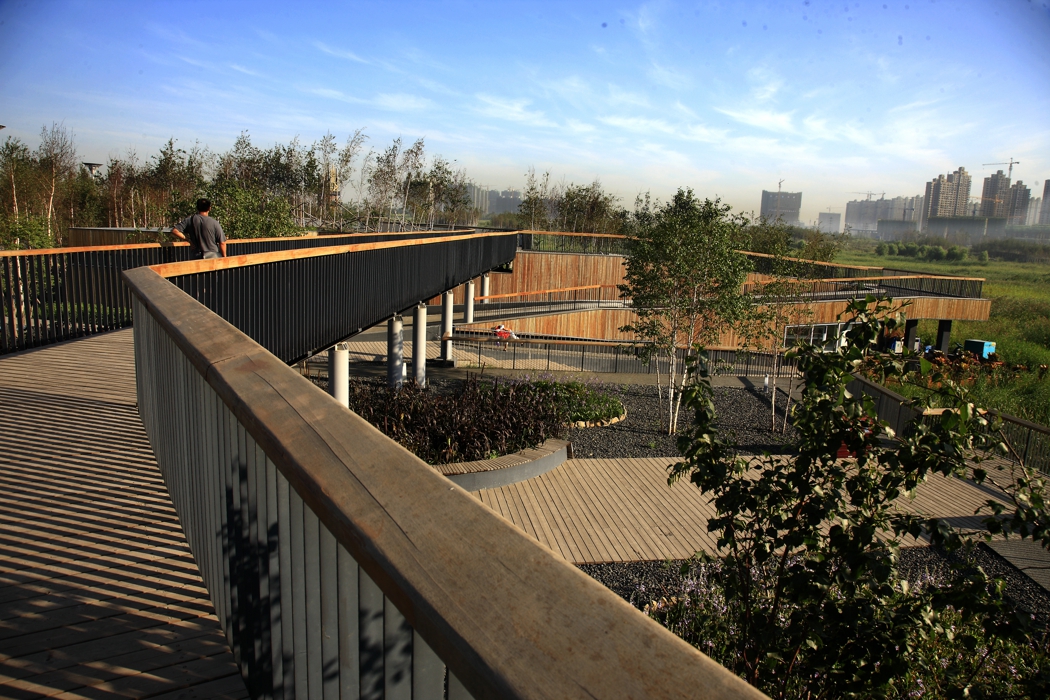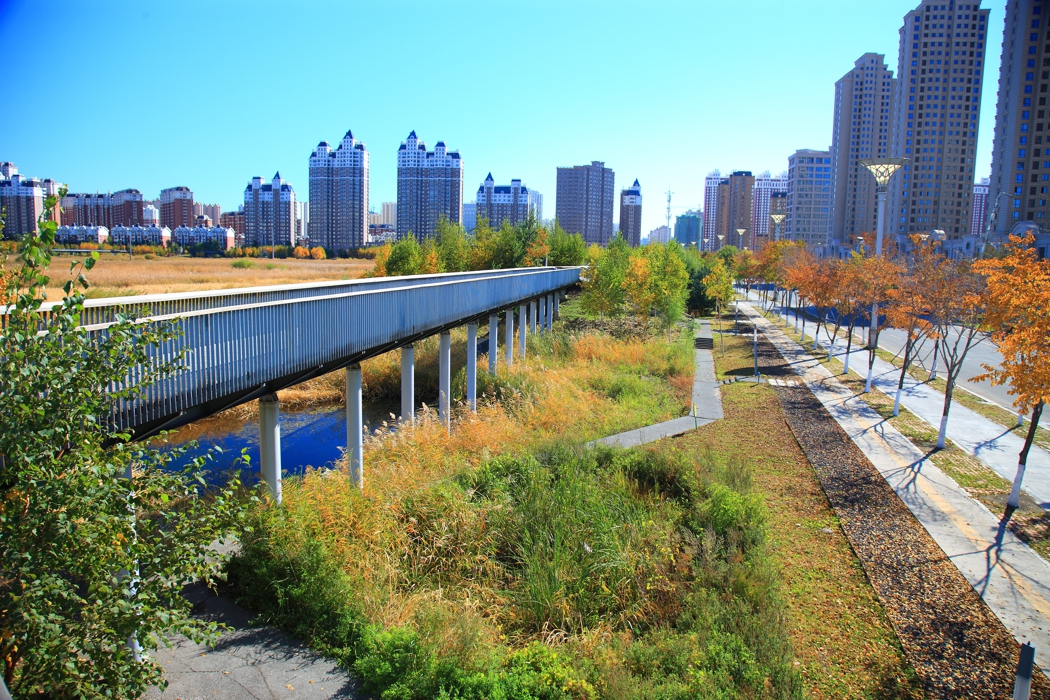Harbin Qunli Wetland Park Skywalk
Project Information
- Project Location:
- China Harbin, Heilongjiang
- Project Scale:
- 952m
- Design Time:
- June 2009
- Build Time:
- December 2011
- Award List:
- 2015 "International Energy Award" National Award, 2012 ASLA Excellence Award, 2012 International Architecture Award
- Related Papers
Project Profile
Harbin Qunli Wetland Park is one of China’s earliest urban stormwater wetland parks developed to address urban flooding. Located in the Qunli New District in eastern Harbin, the area began development in 2006 and spans 2,733 hectares. Upon the park’s completion, it catalyzed the development of a surrounding 32 million square meter residential area, now home to approximately 300,000 residents.
An elevated skywalk is built above the constructed wetland and terrain system, forming a loop around the perimeter of the site and creating an educational and recreational trail. The skywalk connects two observation towers, six themed viewing boxes, and multiple wetland viewing platforms, resulting in a richly varied aerial experience. Positioned along the park’s outer boundary, the skywalk helps manage access to the pristine wetland areas, defining a controlled visual threshold for the park.
Suspended above the ground, the skywalk weaves through forested terrain mounds and spans over wetland basins, forming a continuous aerial corridor that offers views of the wetland from multiple angles. It also serves as a platform for environmental education, allowing visitors to learn about wetland ecology while enjoying the scenery. The two observation towers, located in the park's northwest and southeast corners, serve as landmarks and offer the highest vantage points for viewing the native wetland landscape. These towers also support scientific monitoring and ecological observation.
The viewing platforms are triangular nodes expanded at turns in the skywalk. Designed in two forms—pergola platforms and bench platforms—they offer rest stops for visitors. The pergola viewing platforms are set above terrain mounds and enclosed by dense vegetation, creating quiet, intimate spaces for rest and contemplation. In contrast, the bench viewing platforms are located above open wetland pools, offering expansive views and open-air observation spaces.
